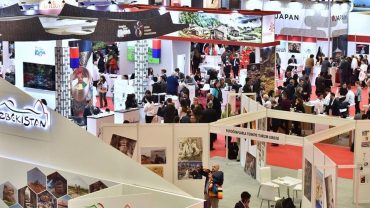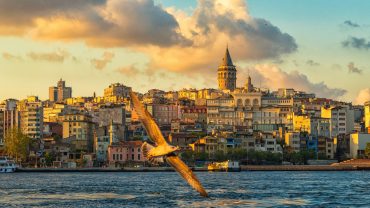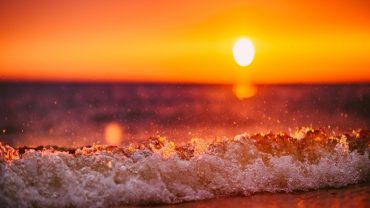Urfa, officially known as Şanlıurfa (pronounced [shanˈlıurfa]), is a city with a population of over 2 million residents in southeastern Turkey, and the capital of Şanlıurfa Province. Urfa is a multiethnic city with a Turkish, Kurdish and Arab population. Urfa is situated on a plain about 80 km east of the Euphrates River.
Its climate features extremely-hot, dry summers and cool, moist winters.
About 12 km (7 mi) northeast of the city is the famous Neolithic site of Göbekli Tepe, the world’s oldest-known temple, which was founded in the 10th millennium BCE. The area was part of a network of the first human settlements where the agricultural revolution took place. Because of its association with Jewish, Christian, and Islamic history, and a legend according to which it was the hometown of Abraham, Urfa is nicknamed as the “City of Prophets.” Cuisine As the city of Urfa is deeply rooted in history, so its unique cuisine is an amalgamation of the cuisines of the many civilizations that have ruled in Urfa .
Dishes carry names in Kurdish, Arabic, Armenian, Syriac, and Turkish, and are often prepared in a spicy manner. It is widely believed that Urfa is the birthplace of many dishes, including Raw Kibbé (Çiğ Köfte), that according to the legend, was crafted by the Prophet Abraham from ingredients he had at hand. The walnut-stuffed Turkish dessert crepe (called şıllık) is a regional specialty. Many vegetables are used in the Urfa cuisine, such as the “‘Ecır,” the “Kenger,” and the “İsot”, the legendary local red capsicum that is a smaller and darker cultivar of the Aleppo pepper that takes a purplish black hue when dried and cured.
Unlike most of the Turkish cities that use different versions of regular butter in their regional cuisine, Urfa is, together with Antep, Mardin and Siirt a big user of clarified butter, made exclusively from sheep’s milk, called locally “Urfayağı” (“Urfabutter”).
Transport
Şanlıurfa GAP Airport is located about 34 km (21 mi) northeast of the city and has direct flights to Istanbul, Ankara and Izmir. The first 7.7 km section, connecting the city centre with the museum quarter, of a planned 4-route, 78 km network of trolleybus lines opened on 16 October 2018. An initial fleet of 10 bi-articulated trolleybuses, together with all fixed equipment, has been supplied by manufacturer Bozankaya. Climate Urfa has a hot summer Mediterranean climate (Köppen climate classification Csa). Urfa is very hot during the summer months. Temperatures in the height of summer usually reach 39 °C (102 °F). Rainfall is almost non-existent during the summer months. Winters are cool and wet. Frost is common and there is sporadic snowfall. Spring and autumn are mild and also wet. Places of interest Urfa castle – built in antiquity, the current walls were constructed by the Abbasids in 814 AD. The legendary Pool of Sacred Fish (Balıklıgöl) where Abraham was thrown into the fire by Nimrod. The pool is in the courtyard of the mosque of Halil-ur-Rahman, built by the Kurdish Ayyubids in 1211 and now surrounded by the attractive Gölbaşı-gardens designed by architect Merih Karaaslan. The courtyard is where the fishes thrive. A local legend says seeing a white fish will open the door to the heavens. Rızvaniye Mosque – a more recent (1716) Ottoman mosque, adjoining the Balıkligöl complex. ‘Ayn Zelîha – A source nearby the historical center, named after Zulaykha, a follower of Abraham. The Great Mosque of Urfa was built in 1170, on the site of a Christian church the Arabs called the “Red Church,” probably incorporating some Roman masonry. Contemporary tradition at the site identifies the well of the mosque as that into which the towel or burial cloth (mendil) of Jesus was thrown (see Image of Edessa and Shroud of Turin). In the south wall of the medrese adjoining the mosque is the fountain of Firuz Bey (1781). Ruins of the ancient city walls. Eight Turkish baths built in the Ottoman period. The traditional Urfa houses were split into sections for family (harem) and visitors (selâm). There is an example open to the public next to the post office in the district of Kara Meydan. The Temple of Nevali Çori – Neolithic settlement dating back to 8000BCE, now buried under the waters behind the Atatürk Dam, with some artefacts relocated above the waterline. Göbekli Tepe – The world’s oldest known temple, dated 10th millennium BCE (ca 11,500 years ago).
Places of interest
Urfa castle – built in antiquity, the current walls were constructed by the Abbasids in 814 AD.
The legendary Pool of Sacred Fish (Balıklıgöl) where Abraham was thrown into the fire by Nimrod. The pool is in the courtyard of the mosque of Halil-ur-Rahman, built by the Kurdish Ayyubids in 1211 and now surrounded by the attractive Gölbaşı-gardens designed by architect Merih Karaaslan. The courtyard is where the fishes thrive. A local legend says seeing a white fish will open the door to the heavens.
Rızvaniye Mosque – a more recent (1716) Ottoman mosque, adjoining the Balıkligöl complex.
‘Ayn Zelîha – A source nearby the historical center, named after Zulaykha, a follower of Abraham.
The Great Mosque of Urfa was built in 1170, on the site of a Christian church the Arabs called the “Red Church,” probably incorporating some Roman masonry. Contemporary tradition at the site identifies the well of the mosque as that into which the towel or burial cloth (mendil) of Jesus was thrown (see Image of Edessa and Shroud of Turin). In the south wall of the medrese adjoining the mosque is the fountain of Firuz Bey (1781).
Ruins of the ancient city walls.
Eight Turkish baths built in the Ottoman period.
The traditional Urfa houses were split into sections for family (harem) and visitors (selâm). There is an example open to the public next to the post office in the district of Kara Meydan.
The Temple of Nevali Çori – Neolithic settlement dating back to 8000BCE, now buried under the waters behind the Atatürk Dam, with some artefacts relocated above the waterline.
Göbekli Tepe – The world’s oldest known temple, dated 10th millennium BCE (ca 11,500 years ago).





Comment (0)